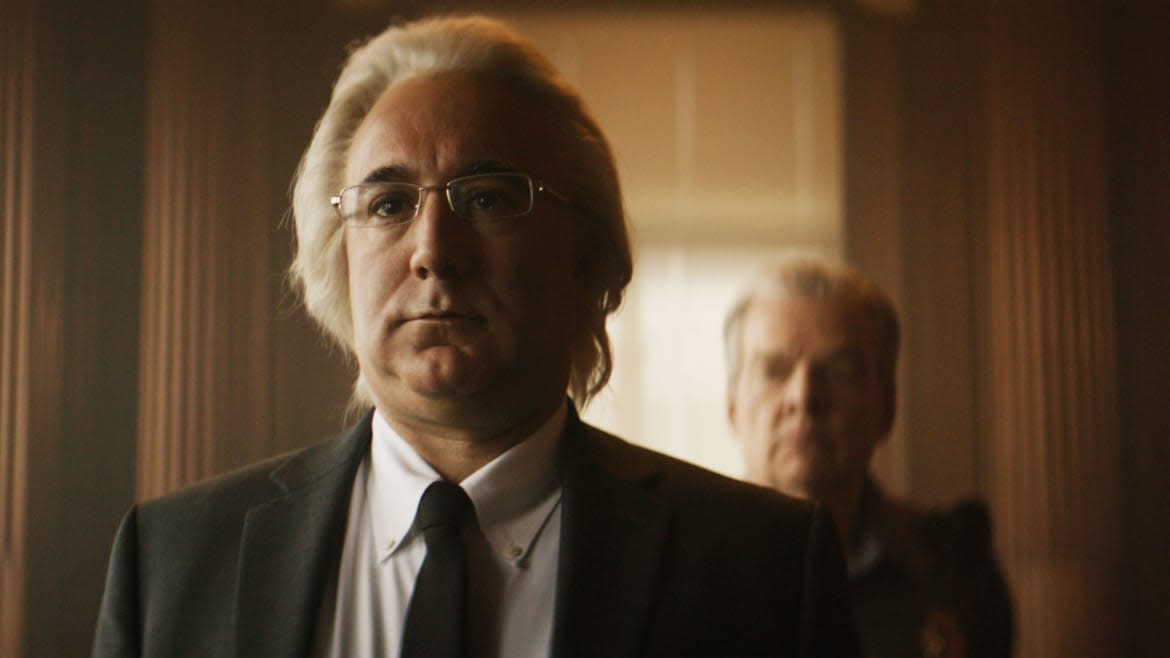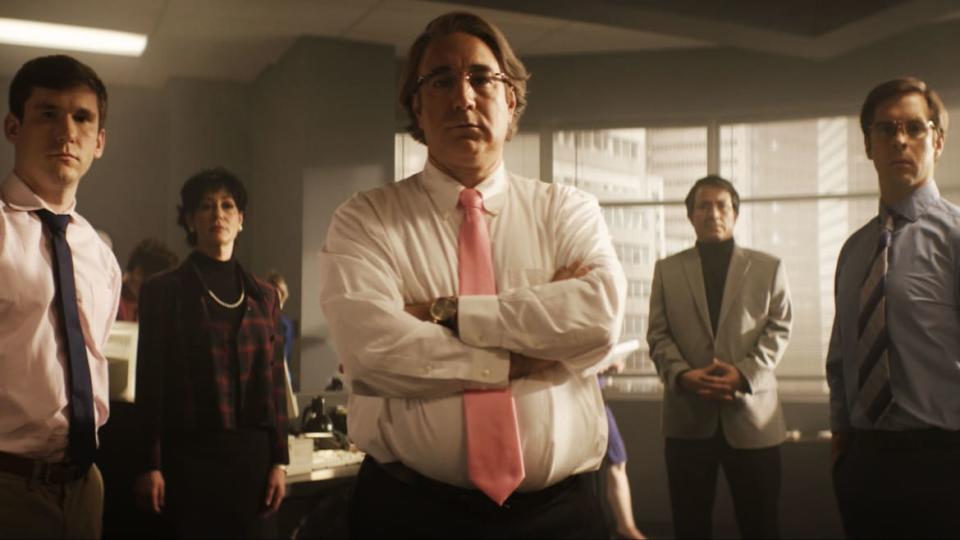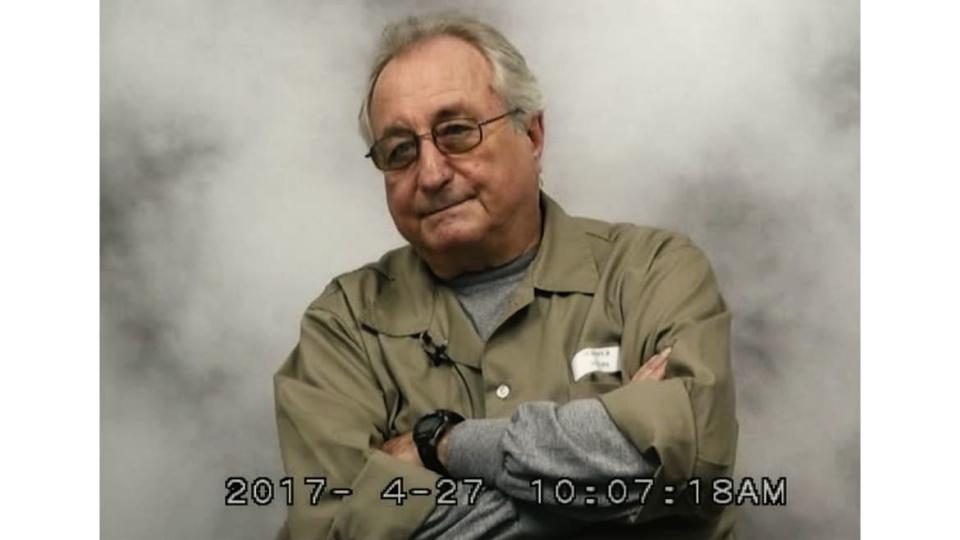Netflix’s ‘Monster of Wall Street’ Is a Stomach-Churning Evisceration of Bernie Madoff

- Oops!Something went wrong.Please try again later.
FTX CEO Sam Bankman-Fried, the crypto mogul currently awaiting trial for allegedly stealing a fortune from customers, appears to be the finance industry’s latest villainous fraudster.". That would make him a kindred spirit to Bernie Madoff, the greedy, conniving, heartless crook who bilked clients out of tens of billions of dollars over the course of his Wall Street career, leaving investors in ruins and his own family in shambles. Madoff: The Monster of Wall Street, director Joe Berlinger’s four-part Netflix docuseries (Jan. 4), is the stomach-churning, blood-boiling definitive account of the infamous financier, recounting his Ponzi-scheming rancidness in exacting detail. It’s the feel-bad series with which to ring in the new year.
Berlinger has made himself one of Netflix’s top true-crime producers, and with Madoff: The Monster of Wall Street, he falls back on his worst habit: staging dramatic recreations that unnecessarily tip the action toward melodrama. There’s little reason to have actors playing Madoff and his associates in dialogue-free sequences designed to accompany interview snippets, and the fact that the finale depicts said thespians donning their makeup and hairpieces—thereby underscoring that they, like Madoff, are phonies—does little to justify their employment. They’re grating affectations, and they stand out all the more strikingly for being part of an otherwise thorough and compelling step-by-step inquiry into the doc’s notorious subject.
Led by interviews with Wizard of Lies author Diana B. Henriques, Madoff Talks author Jim Campbell, The New York Times and CNBC reporter Andrew Ross Sorkin, as well as FBI agents, Madoff employees, and some of the myriad victims of his scam, Madoff: The Monster of Wall Street is an exhaustive recap of one of America’s most heinous frauds. Madoff was busted on Dec. 11, 2008, for operating the largest Ponzi scheme in history, which totaled $64 billion at the time of his arrest—except that, as with everything else about his ruse, that number was a lie invented by Madoff. In truth, he took into his covert investment advisory business approximately $19 billion, precisely none of which he actually invested, despite claiming he was doing just that to the hedge funds, high-rollers, and average citizens who had sent him money.
Tensely scored by System of a Down frontman Serj Tankian, Madoff: The Monster of Wall Street begins with Madoff getting his financial-industry start (thanks to his father-in-law, Saul Alpern), during which time he learned to cannily maneuver inside and outside normal guidelines. His success at trading pink-sheet stocks (i.e., those not listed on the New York Stock Exchange), as well as his technological foresight, helped give birth to NASDAQ and made him a prime Wall Street player. Even at this early stage, Madoff balanced a legitimate trading operation with an illegitimate investment business comprised of 20-plus pooled accounts acquired from Alpern. When the market crashed in May 1962—threatening to out him as a fake—he borrowed money from his father-in-law in order to cover up his losses, in the process making himself appear to be the rare strategist to triumphantly navigate the calamity.

That approach would define the remainder of Madoff’s career. As a market maker who bought and sold stocks as a veritable middleman, Madoff took off in the ’70s and ’80s, and for his above-board endeavor, he hired his brother Peter and, later, his sons Mark and Andrew. He also partnered with accountants Frank Avellino and Michael Bienes, who had taken over Alpern’s business and became the first of many feeder funds into Madoff’s off-the-books advisory hustle. They brought Madoff boatloads of cash to invest, making Madoff immensely rich. When they were busted in 1992, Avellino and Bienes were forced to give up their profession but—despite naming him as the clandestine trader behind the entire venture—Madoff suffered no consequences, and in fact soon found that Avellino and Bienes’ clients were eager to work with him directly.
How Madoff, the ‘Man Without a Soul,’ Hustled His Victims From the Shadows
The reason Madoff kept finding investors was simple: he promised no risks and impossibly lucrative rewards, and he fulfilled that pledge—or so it seemed. In truth, he was running a Ponzi scheme in which he took from Peter to pay Paul, and it grew at such an enormous rate that, while running his legal business on the 19th floor of Manhattan’s Lipstick Building, he had to set up his illicit con on the 17th floor, which was overseen by loyal Frank DiPascali. Buoyed by his peerless industry reputation and shrouding himself in secrecy, Madoff made out like a bandit, along the way enriching his Big Four clients (including, notably, Jeffry Picower) and many others, at least until the 2008 housing market crashed and customers made gigantic withdrawal demands he couldn’t honor—thus exposing his treachery.

Madoff: The Monster of Wall Street is a portrait of numerous things at once: Madoff’s unchecked avarice and shrewd sociopathic horridness; the Securities and Exchange Commission’s failure to properly investigate Madoff, much less hold him accountable; the willingness of banks (specifically, JP Morgan Chase), global investors, and industry players and employees to look the other way at (or outright engage in) criminal behavior in the name of profit; the nobility of a select few (such as Rampart Investment Management’s Harry Markopolos and Frank Casey) to blow the whistle loud enough to make people pay attention; and the misfortune that befell so many across the economic spectrum who foolishly and/or recklessly trusted Madoff and, for it, paid a hefty price. When it comes to the toll wrought by his wretchedness, Madoff has few equals.
Berlinger spends considerable time damning the larger system for enabling Madoff, with a particular focus on the SEC’s repeated, inept examinations of his conduct—which, ultimately, further allowed him to project himself as an upright bigwig deserving of investors’ trust. There’s more than enough censure to go around in Madoff: The Monster of Wall Street, although all fingers eventually point squarely at Madoff, who even in a 2016 video deposition shows no remorse for the wreckage he caused. Whether one believes its every contention about which individuals knew what, and when, the docuseries is a stinting evisceration of a man and a culture that cared more about dollar signs than rules, ethics, or even loved ones. He’s the epitome of all that’s wrong with the financial world—and, for that matter, humanity.
Get the Daily Beast's biggest scoops and scandals delivered right to your inbox. Sign up now.
Stay informed and gain unlimited access to the Daily Beast's unmatched reporting. Subscribe now.

